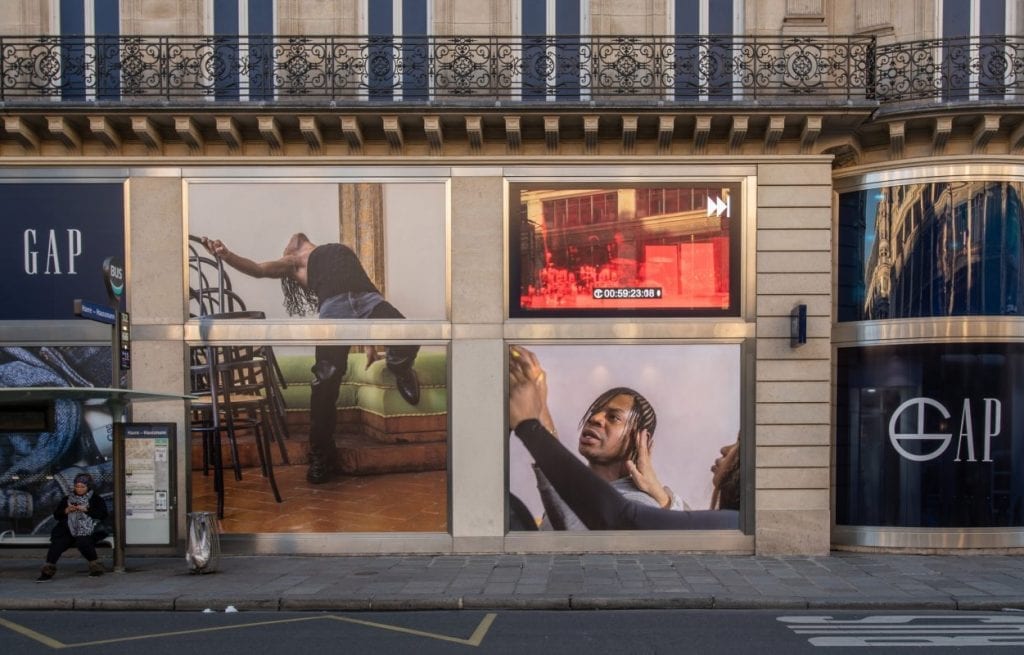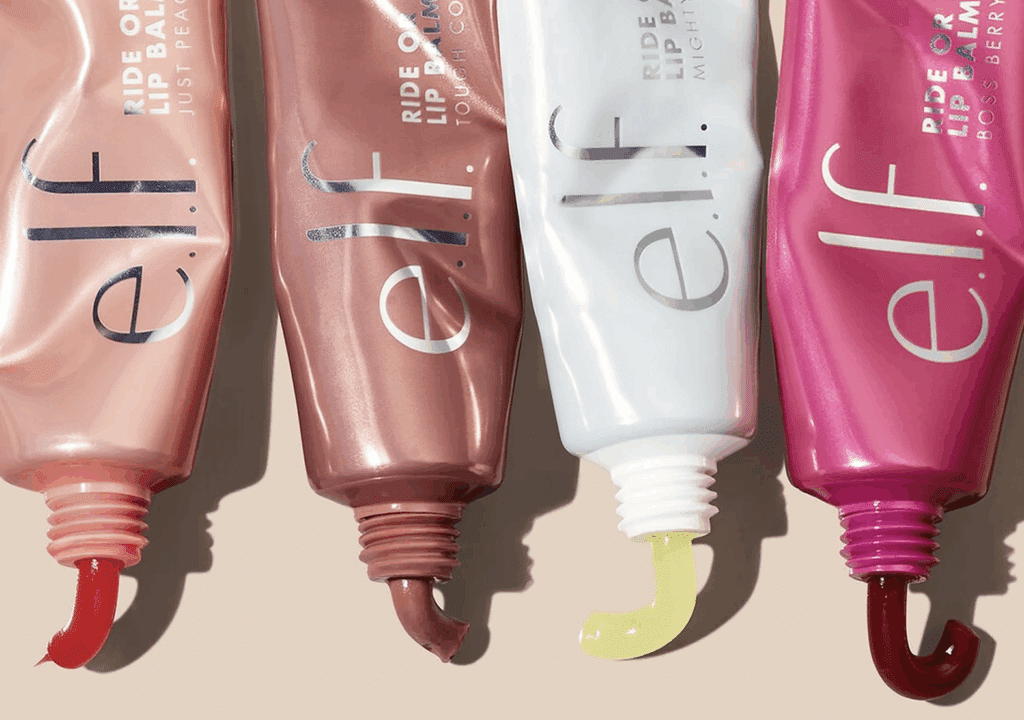The recent news that Gap will partner with Kanye West on a decade-long collaboration made headlines for a number of reasons. Aside from the pure newsworthiness of the tie-up, which will see 25-year old Nigeria-born, London-based designer Mowalola Ogunlesi hold the lead design role, there was another element that caught the attention of the media and fashion fans, alike: in announcing the impending Yeezy Gap collab, Gap was seemingly putting an impending deal with designer Telfar Clemens on the back burner.
As it turns out, Gap had already announced a partnership with 35-year old Clemens’ eponymous label early this year. More than merely announcing the Telfar collab, though, the American mall retailer released a new logo for it (a mashup of Telfar and Gap’s existing logos), and hosted a star-studded party – in a Telfar campaign-adorned Gap store in Paris – during Paris Fashion Week in January to celebrate the highly-anticipated project. All the while, Mr. Clemens and John Caruso, the head of adult design at Gap, gave interviews about how the partnership came about and what consumers could expect from the collection, which was slated to drop “later in 2020.”
Against that background and in lieu of any updates about the launch of the Telfar collection, the news of Yeezy Gap made it seem as though Gap had “dropped one Black creative for a more famous one,” as the New York Times put it last week.
Speaking to the Times’ Vanessa Friedman, Clemens said that while he is “glad to be free” of the deal with Gap, particularly in light of the retailer’s alleged failure to pay its overseas suppliers for cancelled orders in the midst of the COVID-19 pandemic, there is, nonetheless, a lesson to be learned here. It one about the “vast power imbalance” at play in connection with “collaborations between emerging designers, especially emerging designers of color, and giant establishment corporations,” Friedman writes, which may be little more than brands’ attempts to “make a statement about their racial solidarity.”
Now that the initial dust has settled in the Gap x Telfar melee, there is another lesson worth acknowledging here, a legal one, or more specifically, one that centers on contracts and what brands and retailers need to know about them in connection with such headline-making deals, which are common occurrences in fashion and beyond.
As the Times reported, the legal background in the Telfar and Gap deal was a but murky: while Telfar and Gap entered into a formal, written contract for the introductory party in Paris, the contract for the collection, itself, “was still in draft form, unsigned by either party” in early March. Although, a Telfar spokeswoman told the Times that “a deal memo had been agreed upon and the contract [was] promised by March 25.”
Later in March, before a signed contract came into fruition (it never did), Clemens “was told that production [for the collaborative collection] had been postponed indefinitely.” The situation was not merely as simple as parting ways. “Despite not having a finalized contract,” Clemens “had already delivered 30 designs [to Gap], which would form the basis of the [parties’] collection.” Having delivered the samples, Telfar “sent the Gap an invoice asking to be paid for its work, and Gap offered to” – and did – “pay 25 percent of the [$100,000] design fee” they had agreed on, according to the Times. Ultimately, a rep for Gap said last week that the company is “making whole on the full payment regardless [of the fact that it has] chosen not to move forward with the Gap x Telfar partnership at this time.”
While it seems that the two parties will, in fact, part ways peacefully, albeit not without fan furor directed at Gap on social media, the situation raises some interesting points about what was going on from a contract perspective (in lieu of a signed deal for the collection), and how uncertainty in the COVID-19 marketplace is placing increased importance on the formalities behind companies’ partnerships – both now and going forward.
The Contract Behind the Collab
In terms of the Gap x Telfar deal, the fact that the parties’ contract was not actually signed is not as big a deal-breaker as it might initially seem. Traditionally, contracts governing the sale of goods need to be in writing – and signed – for such a contract to be valid if the value of the goods at issue is above a certain amount (usually $5,000). However, that requirement is not particularly relevant here because the deal between Gap and Telfar was not one for goods but for services. Telfar was providing his design services to Gap in exchange for a fee. As such, the absence of a design contract for the $100,000 deal would not be a death-knell should either party seek to enforce it, as Telfar did when it sought payment for the design work.
Instead, the key element that could stand in the way of the validity of deal as a result of the lack of a written contract would be the time-frame. For services deals, a contract generally needs to be in writing if performance of the services is incapable of being performed within a year. So, if the services are slated to last for a period of time longer than a year – such as in the case of the Yeezy Gap collab, which will endure for 10 years – the terms of the deal must be put in writing.
Again, this might not pose an issue in the Gap x Telfar scenario, assuming the collab was a one-season or even couple-season type of thing and Telfar’s obligations could be completed within a year.
“The fact that [the deal was] oral should not be a problem,” according to Caprice Roberts, a visiting professor at George Washington University of Law, who specializes in contracts and remedies, “unless the jurisdiction has a Statute of Frauds [requirement] for this type of agreement must be in writing,” particularly in regards to the licensing element, which would see Gap enjoy the right to use assets of the Telfar brand, including its trademarks and Mr. Clemens’ likeness.
Roberts says that in lieu of a written deal, the parties could still have a valid oral contract if the level of discussions were “concrete enough discussions” for Gap to make an offer to Telfar and for Telfar to agree to the terms set forth by Gap. Alternatively, a contract could be born if there was conduct from which assent to a deal could be implied. Clemens designing and delivering 30 garments to Gap without a contract being signed seems to suggest that requirements for an oral implied in fact contract would be met, and would give rise to potential remedies for Telfar had Gap not agreed to make good on the terms of the deal in an out-of-court capacity.
The COVID-19 Contract
It is unclear whether the unsigned Gap x Telfar collection contract included any specific force majeure language or frustration of purpose-type defenses, and if it did, how they may have played out in connection with the breakdown of the deal had the contract been signed. Nonetheless, the situation as a whole speaks to the increased importance of contract considerations in light of the spread of COVID-19, which has caused big-dollar mergers, such as the $16 billion-plus Tiffany & Co. and LVMH Moët Hennessy Louis Vuitton deal, to be pushed back, and smaller-scale collabs, such as this one, to fall through entirely.
Not nearly as striking as the vastly diminished retail sales figures, rising unemployment rates, and the efforts by companies to swiftly move to prioritize e-commerce operations in light of state-wide non-essential business closure mandates that have come with COVID-19 is the impact that various contract provisions can have on a business in the midst of a global health pandemic like this – for better or for worse.
“While the basic premise under U.S. law is that contracts must generally be kept and performed, an extraordinary circumstance may make performance so vitally different from what was reasonably expected [that it may] relieve performance,” according to Payne & Fears LLP’s Sarah Odia and Scott Luskin. In such a situation, certain contract law concepts – including force majeure, impracticability, and frustration of purpose, which do not tend to apply in regular business dealings – are proving to be commonplace considerations, prompting parties to look to the terms of their contracts in order to grapple with everything from how to deal with supply chain disruptions to how to negotiate a favorable outcome in connection with a fleet of temporarily shuttered brick-and-mortar stores.
Given the novel nature of the present situation, COVID-19 is not merely forcing companies to examine their current contracts, its enduring effects will almost certainly prompt smart companies to consider establishing concrete pandemic-specific policies and procedures for the future – whether that involves them taking a closer look at terms related to real estate holdings (including the potential for rent renegotiations) or the specifics of supplier contracts, and where possible, ensuring that their contracts reflect these new priorities in order to put them in the best place in the immediate future and for dealings beyond that.














